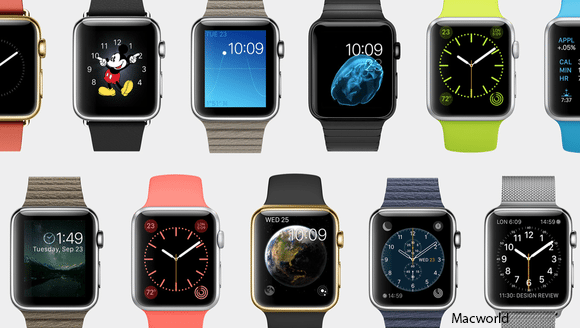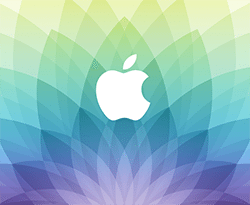
I spend what is probably a silly number of hours a day reading, or at least glancing at, tech articles on the internet. They are concerned endlessly with hardware. The problem is, it is software and services that really matter in an era where quality hardware, especially for smartphones and PCs, is widely available.
 This will surely be obvious on Monday when Apple holds its scheduled announcement on the Apple Watch. It is an unusual event since Apple introduced the product in September. The Apple Watch was described and shown off in much detail, including all three designs and two sizes. What Apple has to talk about on March 9 is the apps and services.
This will surely be obvious on Monday when Apple holds its scheduled announcement on the Apple Watch. It is an unusual event since Apple introduced the product in September. The Apple Watch was described and shown off in much detail, including all three designs and two sizes. What Apple has to talk about on March 9 is the apps and services.
As has so often been the case, the Apple Watch will enter a field dominated by dozens of competitors, from Pebble, Samsung, Google, and Motorola to Chinese manufacturers that appeared at CES without advance warning. We will see how the competition does once Apple announces more details of Apple Watch on Monday.
Apple has clearly worked intensively and for years to top the field of watch designs. If you want the depth of detail on the effort, read The New Yorker‘s profile of Jony Ive, “The Shape of Things to Come“. But as much time as Ive denotes to the physical design, he is also obsessed by the software and services, probably more so than ever after the death of Steve Jobs.
Apple has understood software is at least as important as hardware for decades. The iPod was better designed than all the MP3 devices in the market but it needed both its appearance and the services of iTunes to steal the market.
The iPhone was the notable exception. Apple brought the first iPhone to market as a phone of limited voice quality with weak data services, just one carrier, limited availability of software options, and no provision for the addition of third party apps. The iPhone had a lot of attraction for being a real, if limited, handheld computer. But the market was dominated by BlackBerry, with a great voice phone, keyboard, and email. It was only in the second year, when Apple added third party apps and 3G wireless, the iPhone really took off.
As the apps grew, the iPhone smashed the competition. BlackBerry tried to attract third parties, but its operating system and limited display made the work very difficult. After a very rough start in its start up years, Android has finally come up with a flood of apps, though it is still better at matching iPhones through quantity than quality. Samsung has finally come to realize with the Galaxy S6 the best way to improve its software is to dump the lousy apps it had included in its recent offerings. Meanwhile Microsoft, with a new operating system and Nokia designs, has much improved the Windows Phone but it still struggles for third party apps.
Apple’s history has been to move late, from MP3s to tablets, into markets where many competitors have tried but failed to accomplish much and succeed with good design and even better software. Stay tuned for this to happen again with watches.

Sometimes I feel like I’m from another planet.
“even better software” hasn’t been my experience at all, and I distinctly remember chosing *not* to get an iPod after experiencing iTunes on Windows. Not only was it very restrictive (I had ripped my CDs to FLAC, no can do for iTunes way back then), it was also very buggy (never did manage to import the few hundred CDs I converted to MP3 just for it). iOS’ apps still crash more than Android’s.
Ditto for design: what good is the design of a phone you can hold wrong, or has a glass back ?
I’d go with ease-of-use and fashion instead of design and software as Apple’s trademarks.
You are not alone. When talking about Apple and software, people often bring up the Allan Kay quote, “People who are really serious about software should make their own hardware.”. For Apple it often seems the converse is true: they are serious about making great hardware so they have to control the software. Almost everything I prefer about Apple products ultimately comes down the hardware which is controlled/enabled by very good programming. Most of their user applications, however, are surprisingly abysmal.
Although I agree that software is important, given that there are so many companies focusing on software in one way or the other, I think that “software” is becoming too broad a term.
For example, Android is an amazing feat of software engineering, and given that Java has memory protection, the observation that iOS apps are crashing more than Android could be perfectly accurate (I can’t test myself because I haven’t used Android too much). It’s also no wonder that Google could do this, because I’m sure they are hiring many of the best software engineers in the world. The Android operating system as well as the V8 Javascript engine, and of course the code for all their services, easily proves that Google too can create amazing software. It’s very possible that in terms of software development resources alone, Google is far larger than Apple.
There are so many other companies that do amazing things with software, including even Microsoft. Therefore, in explaining the phenomenal success of Apple, I think that it is too simplistic to distill it to “better software”.
Then what gives Apple the unique ability to charge high margins on their products? Obviously, having a great software engineering team is not sufficient. It must be something more. It might be the design and architecture of the software. It might be internal discipline within the software team to ensure that a certain software design strategy is being followed. It might be the collaborative environment between software teams. It might be the policing of 3rd party apps. This is anyone’s guess.
I’m not sure what the answer is, but as I see it, the simple term “good software” or “better software” certainly doesn’t mean much these days.
Apple’s sw quality is about to get much better.
They are providing public beta releases in both iOS and Mac OS X. The million or so beta tester
There is definately a lot to find out about this subject. I like all the points you made